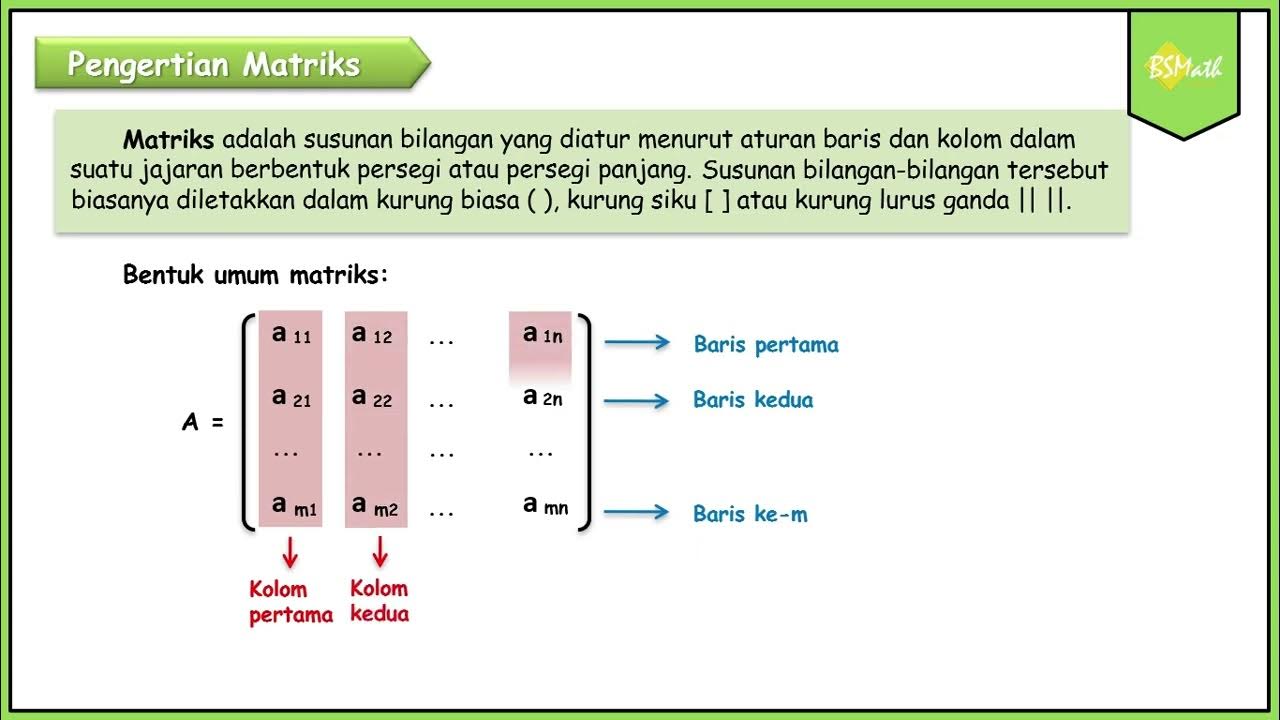Notasi Faktorial (Peluang)
Summary
TLDRIn this video, a teacher introduces the concept of factorial notation to a class of 11th-grade students. The lesson covers the definition of factorial, how to calculate it with examples (e.g., 5! = 120, 4! = 24), and explains different operations like division, addition, subtraction, and multiplication with factorials. The teacher emphasizes simplification techniques for faster calculation, such as canceling common factors. The video also provides practice problems to reinforce the material, encouraging students to join a class group for further clarification. The session ends with health reminders due to the ongoing pandemic.
Takeaways
- 😀 The lesson starts with a greeting and an introduction to the topic of factorial notation.
- 😀 Factorial notation (n!) refers to the product of all positive integers from n down to 1, such as 5! = 5 × 4 × 3 × 2 × 1.
- 😀 The definition of factorial is explained, emphasizing that it involves multiplying consecutive numbers down to 1.
- 😀 The speaker provides examples of calculating factorials for numbers like 5!, 4!, 3!, and 2!, with their respective results (120, 24, 6, and 2).
- 😀 The speaker clarifies that 1! is equal to 1, and that factorial notation applies to all natural numbers.
- 😀 The concept of simplifying factorial expressions by canceling common terms is introduced, using a couple of example problems to demonstrate.
- 😀 A detailed example is given where 5! ÷ 3! is simplified by canceling out the 3! term, making the calculation much easier.
- 😀 The teacher emphasizes using shortcuts for simplifying factorials to speed up the process, such as canceling similar terms in the numerator and denominator.
- 😀 Additional examples include operations with factorials like addition (5! + 4!), subtraction (5! - 3!), and multiplication (3! × 2!).
- 😀 At the end, the teacher encourages students to practice solving problems from the provided exercises and reminds them to submit their work for grading.
Q & A
What is a factorial, and how is it calculated?
-A factorial is a product of a series of consecutive numbers starting from a given number down to 1. It is represented as 'n!', and is calculated by multiplying the number by each successive integer down to 1. For example, 5! = 5 * 4 * 3 * 2 * 1 = 120.
What is the value of 5 factorial (5!)?
-The value of 5! is 120, calculated as 5 * 4 * 3 * 2 * 1 = 120.
How do you compute 3 factorial (3!)?
-3! is calculated as 3 * 2 * 1, which equals 6.
What does 'n factorial' mean in terms of multiplication?
-'n factorial' refers to the multiplication of all positive integers from 'n' down to 1. For example, 4! means 4 * 3 * 2 * 1.
How can you simplify expressions involving factorials, such as 5! divided by 3!?
-You can simplify factorial expressions by canceling common terms in the numerator and denominator. For example, 5! / 3! simplifies as (5 * 4 * 3 * 2 * 1) / (3 * 2 * 1), which simplifies to 5 * 4 = 20.
What is the value of 7 factorial (7!) divided by 5 factorial (5!) multiplied by 3 factorial (3!)?
-This expression simplifies as follows: 7! / (5! * 3!) = (7 * 6 * 5 * 4 * 3 * 2 * 1) / [(5 * 4 * 3 * 2 * 1) * (3 * 2 * 1)]. Cancel the 5! and 3! terms and you're left with 7 * 6 = 42.
How do you compute the sum of factorials, like 3! + 4!?
-To compute 3! + 4!, first calculate the individual factorials: 3! = 6 and 4! = 24. Then, add them together: 6 + 24 = 30.
How do you subtract factorials, as in 5! - 3!?
-To subtract factorials, first compute the individual factorials: 5! = 120 and 3! = 6. Then, subtract: 120 - 6 = 114.
What is the importance of understanding the notation of factorials in combinatorics?
-Understanding factorials is essential in combinatorics because they are used to calculate permutations and combinations, which involve selecting and arranging items in specific ways. Factorials help simplify these calculations.
What should be the approach for solving complex factorial equations in a quick manner?
-For quick solutions, cancel out common factorials in both the numerator and denominator. Focus on simplifying the expression by eliminating terms that are common in both parts, reducing the complexity of the calculation.
Outlines

このセクションは有料ユーザー限定です。 アクセスするには、アップグレードをお願いします。
今すぐアップグレードMindmap

このセクションは有料ユーザー限定です。 アクセスするには、アップグレードをお願いします。
今すぐアップグレードKeywords

このセクションは有料ユーザー限定です。 アクセスするには、アップグレードをお願いします。
今すぐアップグレードHighlights

このセクションは有料ユーザー限定です。 アクセスするには、アップグレードをお願いします。
今すぐアップグレードTranscripts

このセクションは有料ユーザー限定です。 アクセスするには、アップグレードをお願いします。
今すぐアップグレード関連動画をさらに表示

Pengertian Matriks - Matematika Tingkat Lanjut SMA Kelas XI Kurikulum Merdeka

PENGENALAN MATERI PRODUK KREATIF DAN KEWIRAUSAHAAN || Pertemuan ke 1 || kelas XI dan kelas XII

Materi Seni Musik Kelas XI : Notasi Musik Barat

Mahasiswi "Lintang Tiara" Praktik Mata Kuliah Micro Teaching "Dr. Akif Khilmiyah, M.Ag." PAI

Teaching Demonstration in Multi Grade Teaching- English 5 and 6

Video Pembelajaran Berdiferensiasi Kelas 2 SDN Total Persada BAB 6 Bijak dalam Penggunaan Uang
5.0 / 5 (0 votes)
